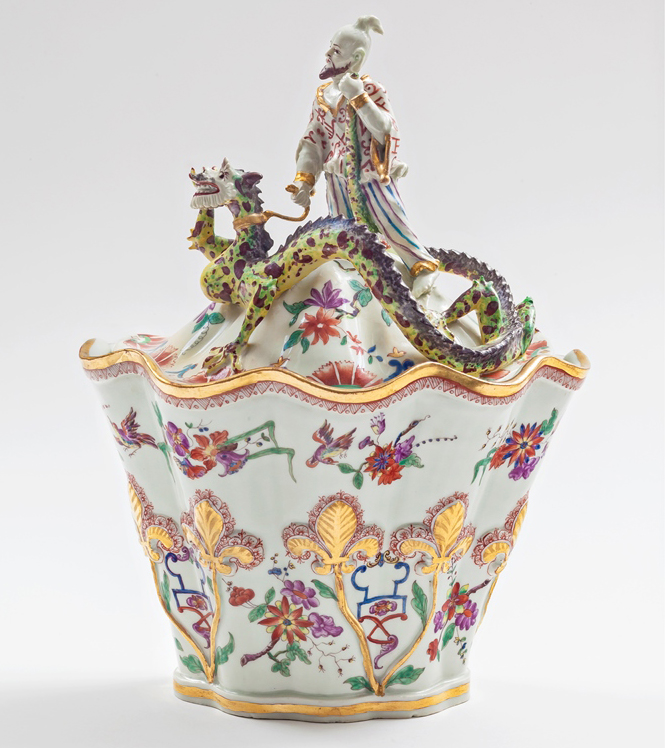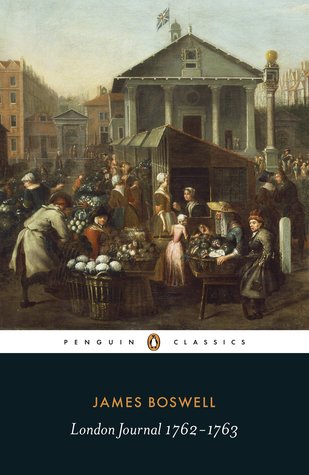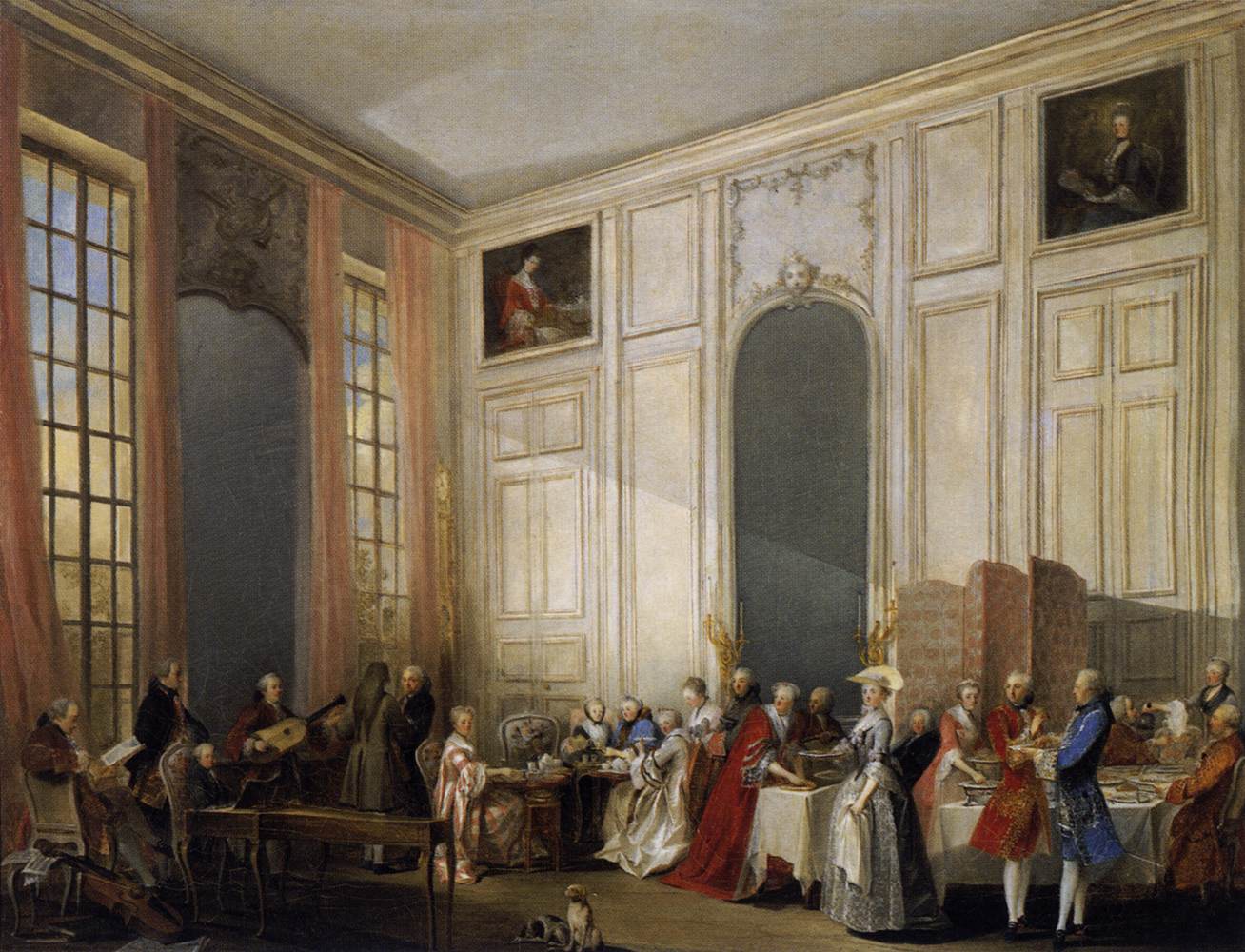Quick Fire: 5 Questions with Chief Curator Meredith Chilton
Chief Curator Meredith Chilton delighted us with insight into her love of porcelain ahead of her upcoming lecture Painted on Porcelain: A Canadian Odyssey.
You were the Gardiner Museum’s Acting Director and Curator when it first opened its doors in 1984. Do you recall your what your favourite object from the collection was then, and is it different from your current favourite?
In 1984, when the doors of the Museum opened, my favourite object was the Vienna Du Paquier porcelain vase with the Chinese magician and the leashed dragon on the lid. It was made in about 1725, really early for such an ambitious piece. What I love is its sense of whimsy. You can see the dragon has long eyelashes, and the man has magic symbols on his jacket. It was intended as a pot-pourri. When you lift off the lid, the base has a pierced cover underneath. It is also the only known complete surviving example. Wonderful! It is still one of my favourite objects, but if I could choose a close follow-up, it would be the Chelsea rabbit tureen. Both can be seen in the second-floor European porcelain galleries.
 Wall Vase, Claudius Innocentius du Paquier Factory, Austria, Vienna, Vienna, c.1730, Gift of George and Helen Gardiner, G83.1.1220.1-2
Wall Vase, Claudius Innocentius du Paquier Factory, Austria, Vienna, Vienna, c.1730, Gift of George and Helen Gardiner, G83.1.1220.1-2
What are you reading right now?
I’m reading Boswell’s London Journal 1762 – 1763. It is quite astonishing what those eighteenth century gentlemen got up to!

You’ll be discussing Walter Cheadle and Viscount Milton’s 1862 Canadian adventure from the Atlantic to the Pacific in an upcoming Gardiner Signature Lecture—what excites you most about their journey?
What excites me most is that these were ordinary men, not scientists or soldiers, who went off an a true adventure. It took Milton and Cheadle almost two years to cross Canada, but it is the last part of the journey when their expert Métis guide took them across the Rocky Mountains and then on to the gold fields of Cariboo, that is particularly fascinating. They made spontaneous observations about everything around them: from the glorious scenery; to their hair-raising experiences; to what they were able to scrounge to eat when they ran out of supplies. They ended up eating skunk (delicious) and porcupine (rather strongly flavoured). When Milton and Cheadle returned to England, they published an account of their adventures, which became a best-seller, and two dessert services were specially commissioned to commemorate their journey. The whole story is remarkable.
If you could resurrect an old porcelain manufactory, which one would you choose and why?
If I could, I would revive Du Paquier’s porcelain manufactory in Vienna. It only lasted 25 years, from 1719 to 1744, and was the second producer of hard-paste porcelain in Europe, after Meissen The establishment and early years of Du Paquier sound surprisingly modern, with industrial espionage, poached key employees, broken promises and sabotage all part of the mix. Despite it all, the manufactory took huge creative risks, making some of the most delightful and original porcelain ever produced. The Gardiner is very fortunate to have one of the great collections of Du Paquier. You can see it in the second-floor porcelain galleries.
You’re an independent specialist in early European porcelain, dining and social culture of the eighteenth century—what aspects of eighteenth century culture do you wish remained today?
This is a hard question as the great cultural highlights of the eighteenth century were available only to a tiny minority of the population: the aristocracy and the wealthy. I think I would like to revive the culture of tea drinking in the afternoon. Family members would gather with friends and guests to drink tea alfresco, or in a salon indoors. It was a time for bright conversation and sometimes music. In 1764 the young Mozart entertained the guests of the Prince de Conti at an English tea held in at the Palais du Temple in Paris. Of course, porcelain and silver were at the centre of everything. I could imagine myself drinking a cup of Oolong tea out of a delicate Sèvres cup and saucer, however, the downside would be having to wear a corset!
 Afternoon Tea at the Temple, 1766, oil on canvas by Michel-Barthélémy Olivier (Musée National du Château, Versailles). The painting depicts Wolfgang Mozart entertaining the court of Louis François, Prince of Conti in the Four-Mirror Salon of the Palais du Temple, Le Marais, Paris.
Afternoon Tea at the Temple, 1766, oil on canvas by Michel-Barthélémy Olivier (Musée National du Château, Versailles). The painting depicts Wolfgang Mozart entertaining the court of Louis François, Prince of Conti in the Four-Mirror Salon of the Palais du Temple, Le Marais, Paris.
Meredith Chilton is the Chief Curator at the Gardiner Museum, and was recently honoured with the Order of Canada for her outstanding achievements and service to the Gardiner Museum community and beyond. She’ll be recounting Walter Cheadle and Viscount Milton’s two-year 1862 Canadian adventure and highlighting the porcelain it inspired in an upcoming Gardiner Signature Lecture. Learn more here.